
Home
Preamble
Index
Areas
Map
References
Me
Drakkar
Saunterings: Walking in North-West England
Saunterings is a set of reflections based upon walks around the counties of Cumbria, Lancashire and
North Yorkshire in North-West England
(as defined in the Preamble).
Here is a list of all Saunterings so far.
If you'd like to give a comment, correction or update (all are very welcome) or to
be notified by email when a new item is posted - please send an email to johnselfdrakkar@gmail.com.
183. On the Moors and Pastures above Bentham
The forecast was for half a day’s sunshine so we went for half a day’s walk, which seemed
ample after last week’s experience
(Sauntering 182). We headed for the moors above Bentham.
On crossing the cattle-grid we saw a line of people standing thirty metres or so apart
each holding a large flag. At a whistle they all walked forward waving their flags. They were
beaters beating the grouse (we didn’t see any) towards the shooters manfully manning the butts
up on the moor. I asked one of the beaters if this meant that the moors were closed for walkers
(we saw no signs to that effect) and he said that he supposed so but he clearly neither knew
nor cared. He was no doubt content to earn some money
(£50 a day, I gather) just by walking across a moor with a flag.
We had no flag so we walked in the other direction, but first to the Great Stone of
Fourstones. The other threestones have disappeared. The Great Stone is about four metres
high and provides an excellent point from which to view the Yorkshire Dales hills, including
the Three Peaks, to the north.
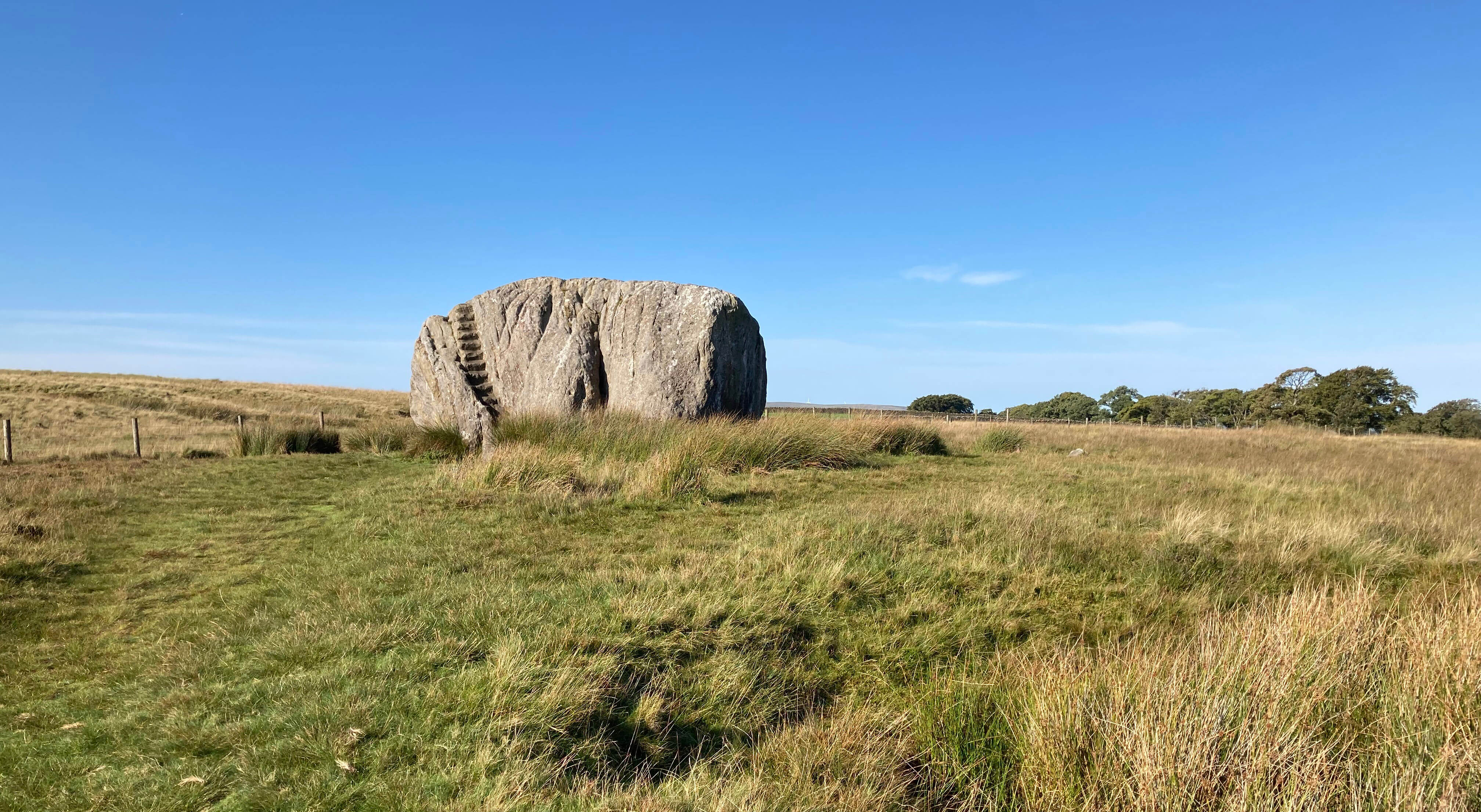
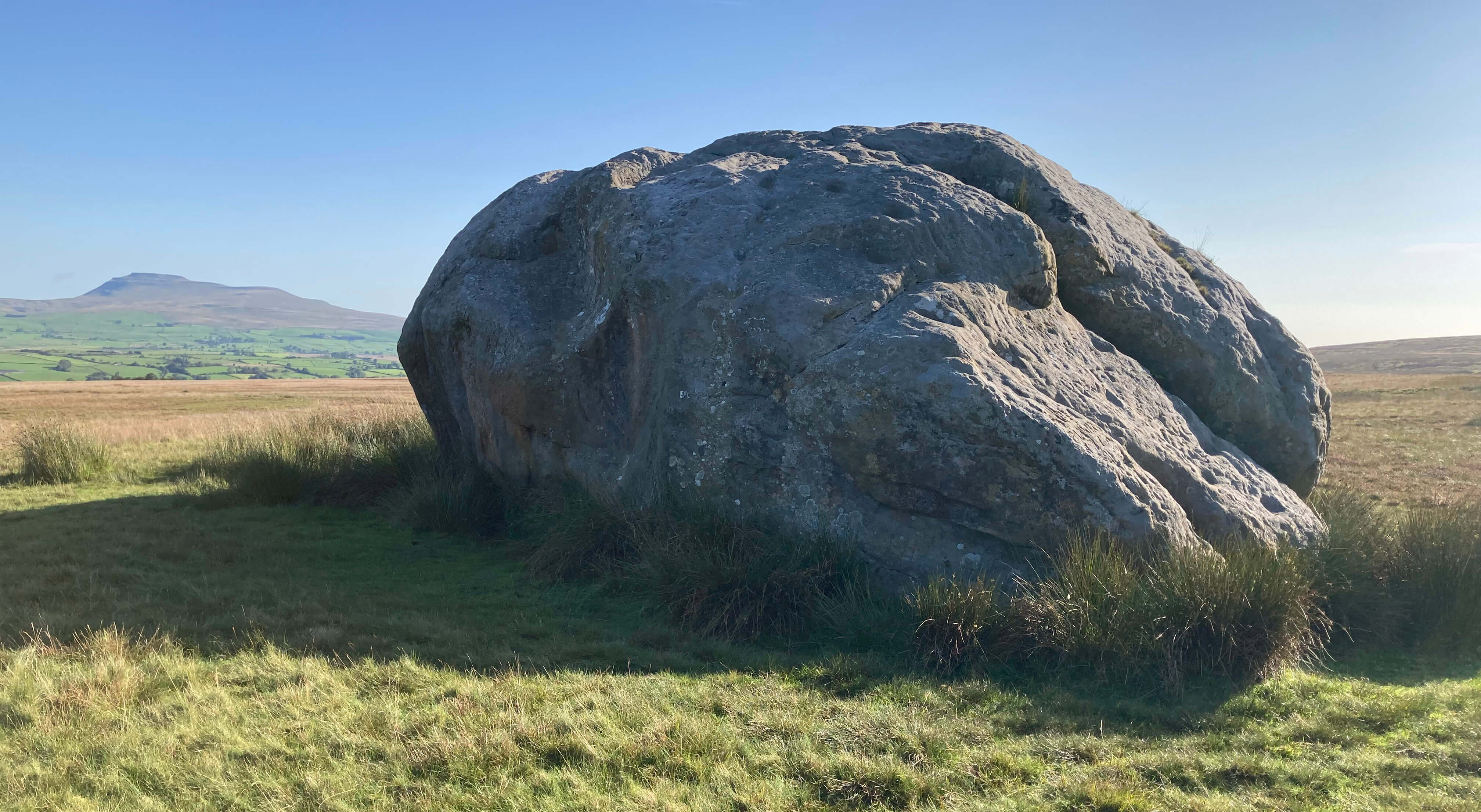
Left: Approaching the Great Stone of Fourstones;
Right: From the other side of the Great Stone, with Ingleborough in the distance
From the Great Stone we walked on a gentle circuit through the quiet moors and fields to the
west. On the moor beyond Fourstones Barn we came across three fine horses wandering free,
much too fine to be wandering free. We had crossed no barrier that would stop them reaching
the road that we came on.
Less remarkably, in many fields we passed flocks of sheep. This is not something
normally to be remarked upon but since this walk, while perfectly pleasant and suited to the
occasion, had not a lot of exciting interest for me to report, I’ll pause to consider those sheep.

A typical field of sheep
Sheep are such a constant presence in these Saunterings
that I have taken their company for granted. In my excuse,
they are dull animals, aren’t they? I can imagine having a chat with a cow, as it
looks at me with those doleful eyes while ruminating on the problems of the world, and even a
horse, as it wanders over seeking a nuzzle. But a sheep? They invariably walk away
from me, in a group or a line, as if they were clones, as they might well be, since they all
look the same.
I can see why Tomasz Schafernaker (BBC weatherman) thought lambs and sheep were two
distinct species on
Would I Lie to You?.
Where does the lamb’s joie de vivre
go? Perhaps the mature sheep is grieving for all its lamb-friends who did not make
it through lambhood. What has a sheep to look forward to? Years of eating grass.
Occasionally, the indignity of being shorn to scrawniness. For the ewes, a once a year session
with a battering ram. Only for the joys of motherhood to abruptly, mysteriously end
when her lambs disappear.
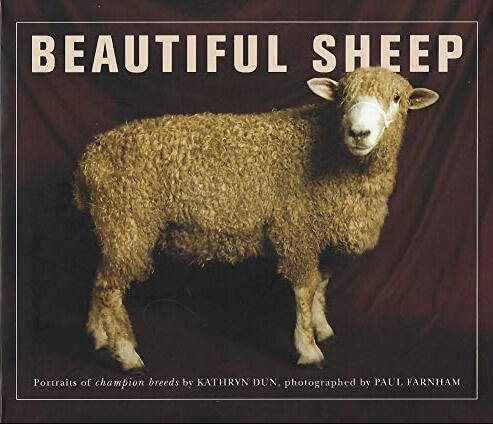 However, sheep do have one source of excitement in their lives – the various agricultural shows.
For these, the prize sheep are prepared, preened, primped, prinked, presented and praps
some other words beginning with pr. The book Beautiful Sheep (Dun and Farnham, 2008)
shows the result: “it presents sheep as you’ve never seen them before – elegant and coiffured
to perfection, ready for the catwalk” (catwalk? – surely some mistake).
However, sheep do have one source of excitement in their lives – the various agricultural shows.
For these, the prize sheep are prepared, preened, primped, prinked, presented and praps
some other words beginning with pr. The book Beautiful Sheep (Dun and Farnham, 2008)
shows the result: “it presents sheep as you’ve never seen them before – elegant and coiffured
to perfection, ready for the catwalk” (catwalk? – surely some mistake).
The book also gives a potted history of sheep. I learned that sheep are not in fact
all the same. There are hundreds of breeds of them, from the Shetland Ewe at 30 kg to the
Charollais Ram at 150 kg. And that they provide three useful products (wool, meat and milk),
which is three more than I can manage. Sheep farming is one of our oldest industries,
having begun in the Middle East in about 9000 BC. There are many references to sheep in
the Old Testament – and in our churches today. The first evidence of sheep in the UK dates
from the Neolithic period (4000 – 2000 BC). We have developed all those breeds for their
different varieties of wool and meat (mainly the latter nowadays), with most breeds being
specialist, either for the wool (such as the Soay) or the meat (such as the Suffolk),
although some are dual-purpose (such as the Wensleydale).
There are 33 million sheep in the UK, that is, half a sheep per person. In North-West England the main breeds are
• Herdwick (the sheep of the Lake District fells)
• Rough Fell (also a hardy fell sheep, seen mainly around the Howgills)
• Swaledale (the most common lowland sheep in this region)
• Wensleydale (less commonly seen but it sounds local).
Most if not all the sheep seen on this walk were Swaledale. I didn’t see any with rosettes.
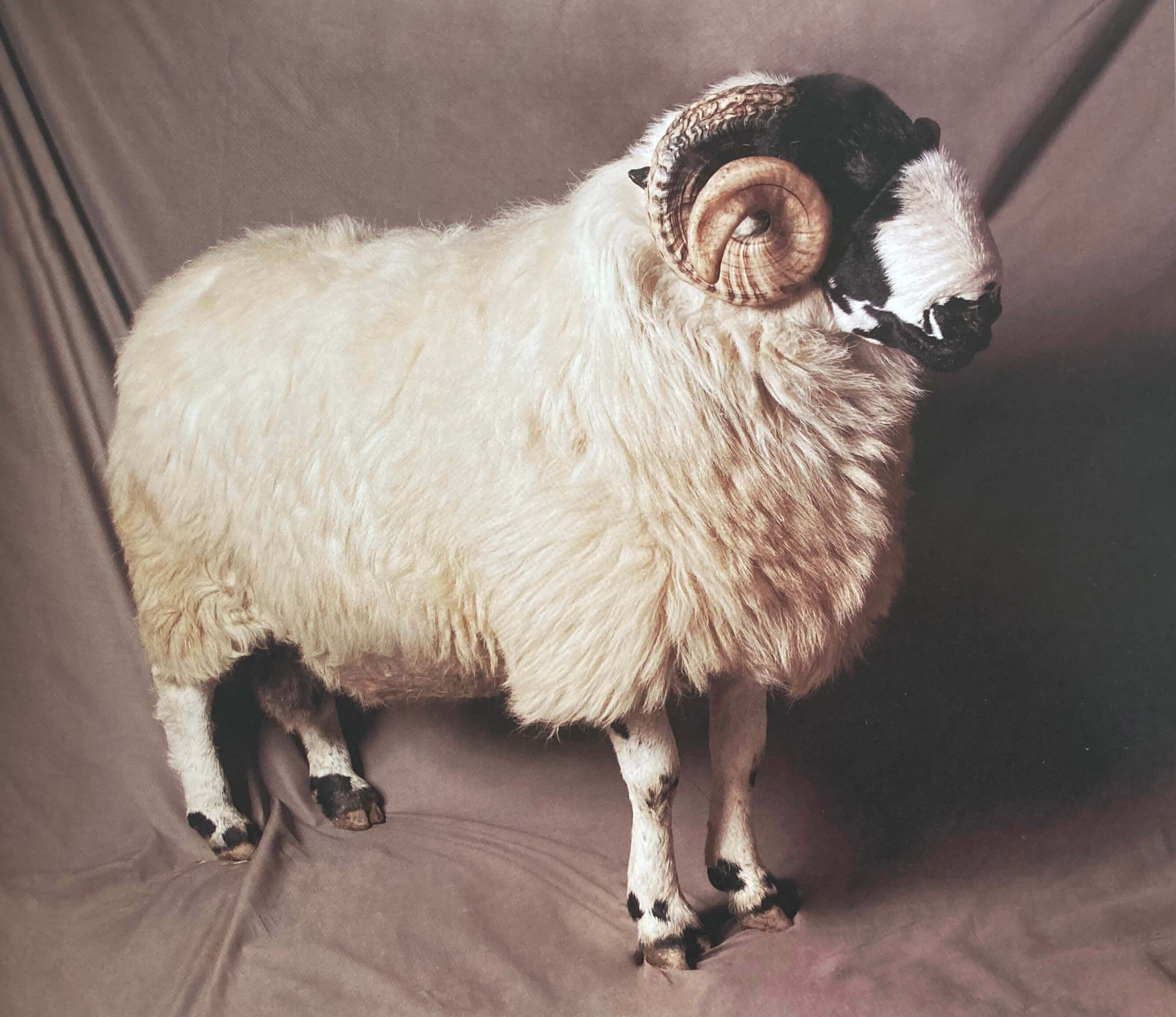
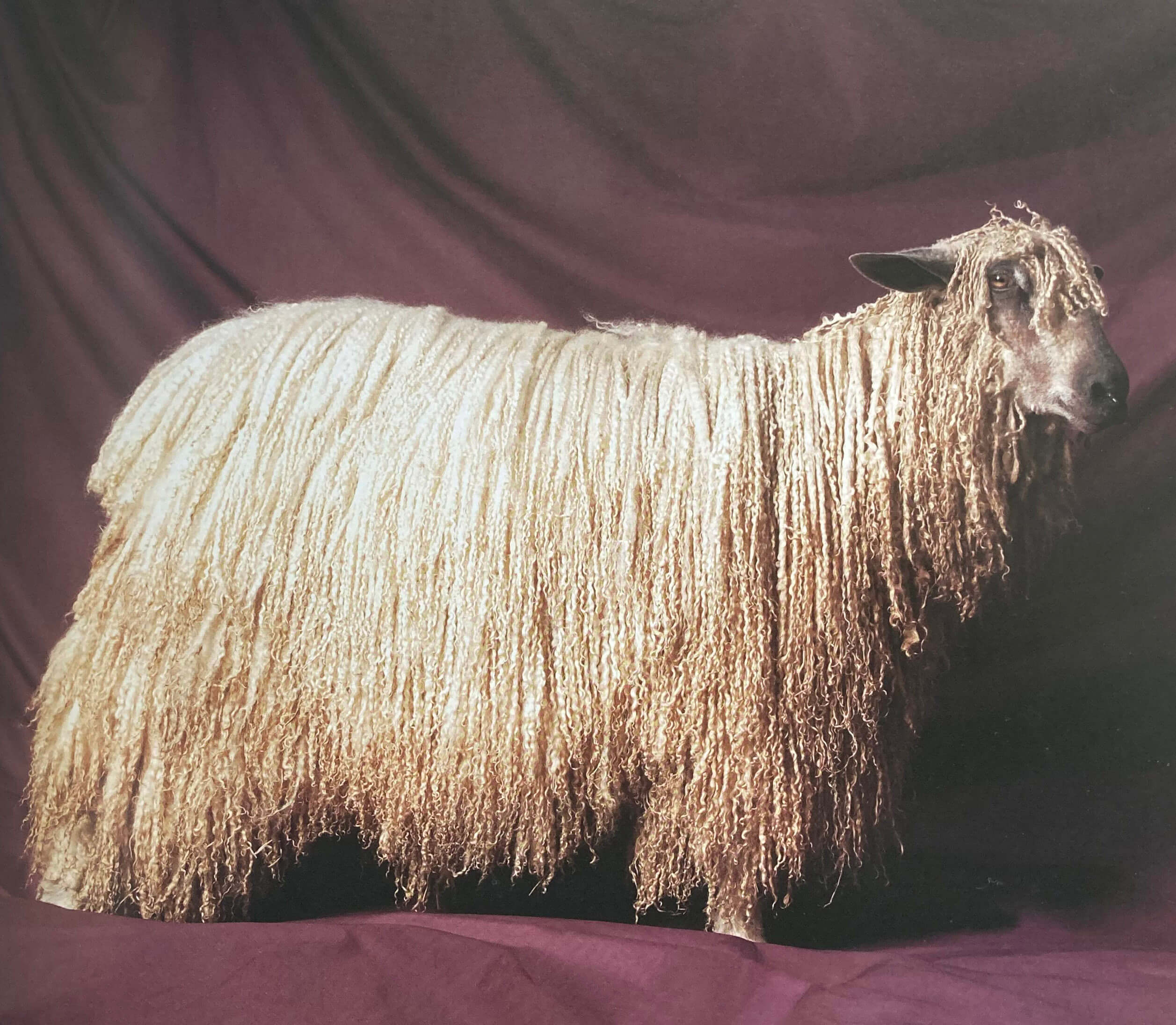
From 'Beautiful Sheep' (how do they get the sheep to
pose?) Left: Rough Fell ram; Right: Wensleydale ewe.
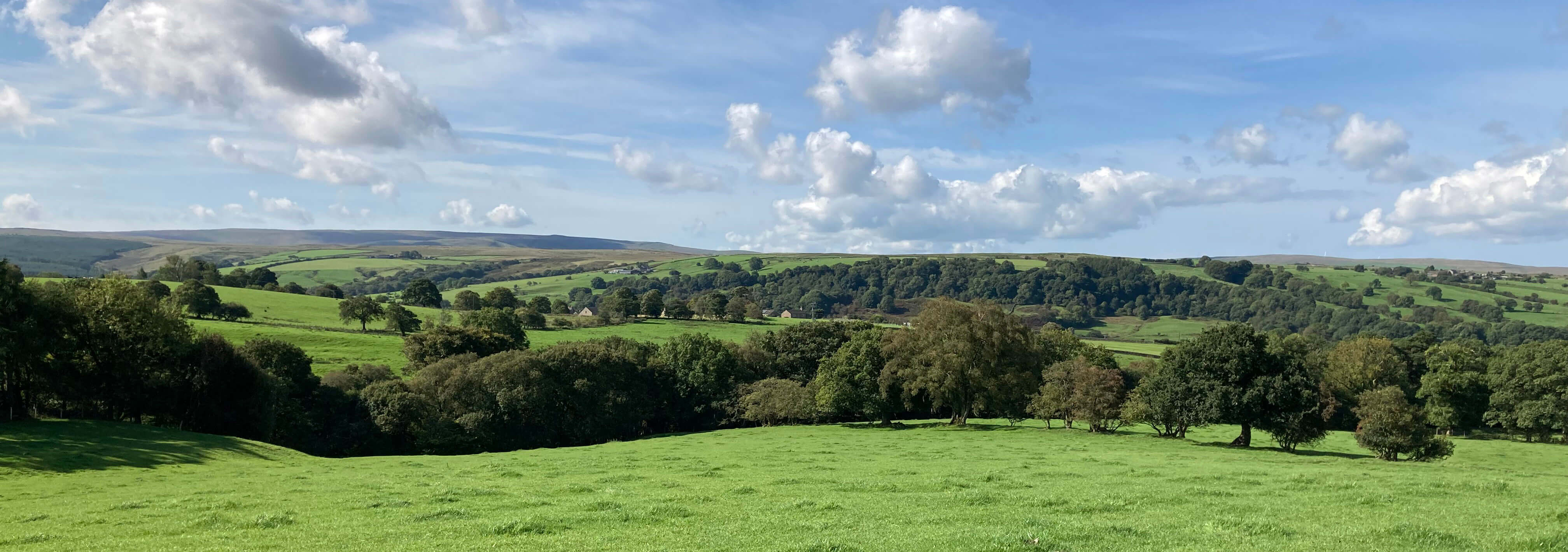
A typical view, over Lowgill to the Bowland hills
After crossing fields and walking along quiet lanes, with good views of the Bowland hills and
across the bay to the Lake District fells, we came to the Church of the Good Shepherd, where
members of the flock dip in regularly to be cleansed of their impurities.
The path through Foss Bank and Ringstones brought us back to the Bentham moors.
During the walk we had heard very little sound of shooting. Judging from the gun-fire, the
beaters probably flushed only half a dozen grouse. I hope that the shooters missed.
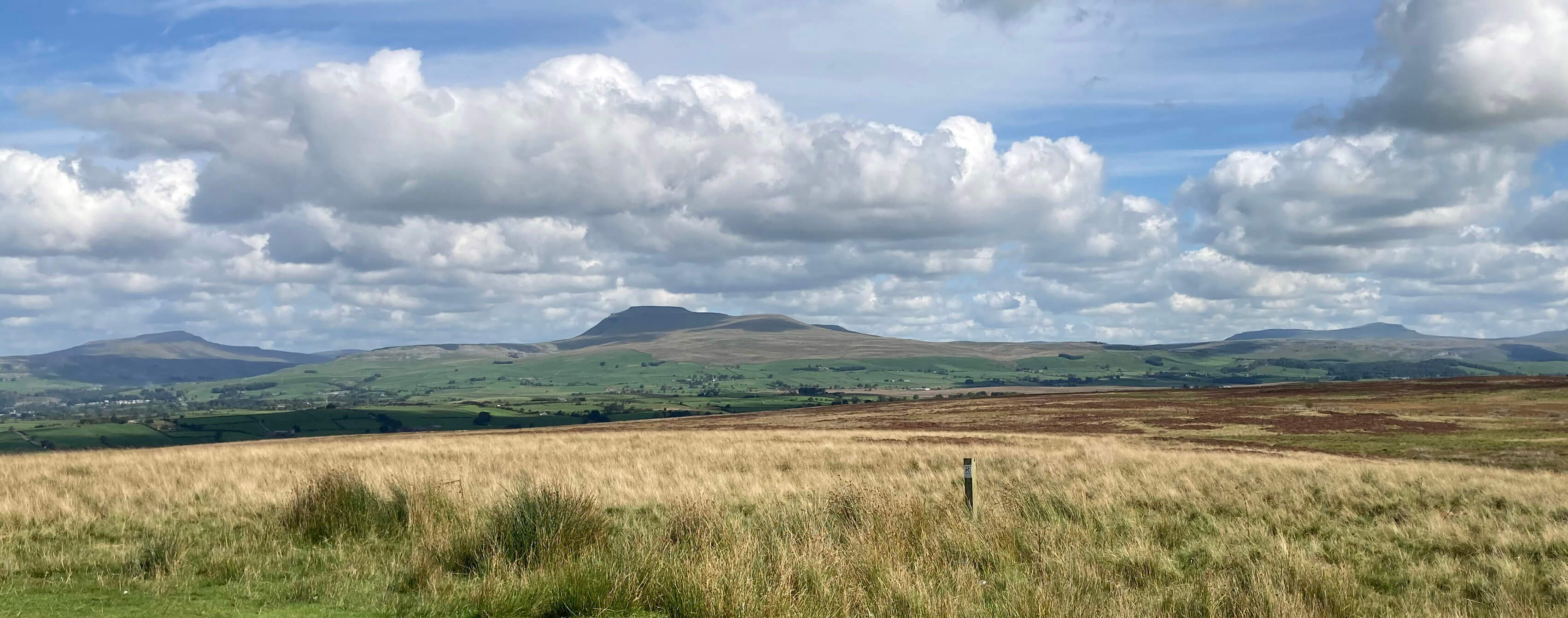
Whernside, Ingleborough and Pen-y-ghent (and clouds)
Date: September 13th 2023
Start: SD671664, lay-by on Slaidburn Road (Map: OL41)
Route: SW – Great Stone of Fourstones – N, W – Thwaite Lane – SE, S – Church
of the Good Shepherd – E – Foss Bank, Ringstones – NE, N – lay-by
Distance: 5 miles; Ascent: 75 metres
Home
Preamble
Index
Areas
Map
References
Me
Drakkar
© John Self, Drakkar Press, 2018-

Top photo: The western Howgills from Dillicar;
Bottom photo: Blencathra from Great Mell Fell





 However, sheep do have one source of excitement in their lives – the various agricultural shows.
For these, the prize sheep are prepared, preened, primped, prinked, presented and praps
some other words beginning with pr. The book Beautiful Sheep (Dun and Farnham, 2008)
shows the result: “it presents sheep as you’ve never seen them before – elegant and coiffured
to perfection, ready for the catwalk” (catwalk? – surely some mistake).
However, sheep do have one source of excitement in their lives – the various agricultural shows.
For these, the prize sheep are prepared, preened, primped, prinked, presented and praps
some other words beginning with pr. The book Beautiful Sheep (Dun and Farnham, 2008)
shows the result: “it presents sheep as you’ve never seen them before – elegant and coiffured
to perfection, ready for the catwalk” (catwalk? – surely some mistake).




